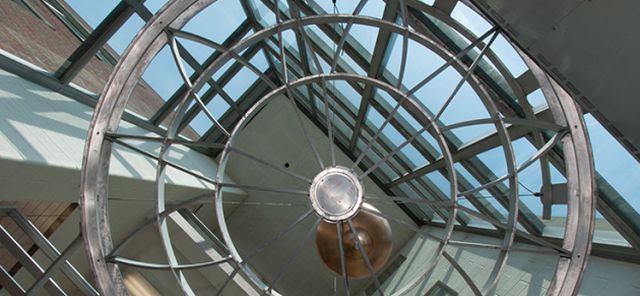
Physics Faculty Publications
Title
Cost-Availability Curves for Hierarchical Implementation of Residential Energy-Efficiency Measures
Document Type
Article
Publication Date
4-2015
Publication Source
Energy Efficiency
Abstract
Historical residential electricity data and natural gas consumption data were collected for, respectively, 1,200 and 178 residences in a small town in the USA. These data were merged with local building and weather databases, and energy consumption models were developed for each residence, revealing substantial variation in heating and cooling intensity. After estimating approximate physical building characteristics, energy profiles for each residence were calculated, and savings from adoption of the most cost-effective energy-efficiency measures for each residence were estimated. Effectively, we wish to leverage commonly available data sets to infer characteristics of building envelopes and equipment, without the need for detailed on-site audits. This study evaluates the potential energy savings for the residences studied and, by extrapolation, for the entire town, as a function of cost if the savings measures were to be implemented in rank-order of cost effectiveness to show that savings penetration for the community comes with nonlinearly increasing cost. The results show that nearly a 32 % collective savings in HVAC energy use could be achieved with a collective levelized cost for energy-saving measures of $10/mmBTU saved if the most cost-effective measures among the entire community are implemented first.
Inclusive pages
267-279
ISBN/ISSN
1570-646X
Document Version
Postprint
Copyright
Copyright © 2015, Springer
Publisher
Springer
Volume
8
Issue
2
Peer Reviewed
yes
Keywords
Community, Levelized cost, Energy efficiency, Residential HVAC, Utility programs
eCommons Citation
Villoria-Siegert, Roman; Brodrick, Philip; Hallinan, Kevin P.; and Brecha, Robert J., "Cost-Availability Curves for Hierarchical Implementation of Residential Energy-Efficiency Measures" (2015). Physics Faculty Publications. 13.
https://ecommons.udayton.edu/phy_fac_pub/13
Included in
Engineering Physics Commons, Environmental Education Commons, Environmental Health and Protection Commons, Natural Resource Economics Commons, Natural Resources and Conservation Commons, Oil, Gas, and Energy Commons, Other Physics Commons



Comments
The document available for download is the authors' accepted manuscript, provided in compliance with the publisher's policy on self-archiving. Permission documentation is on file.